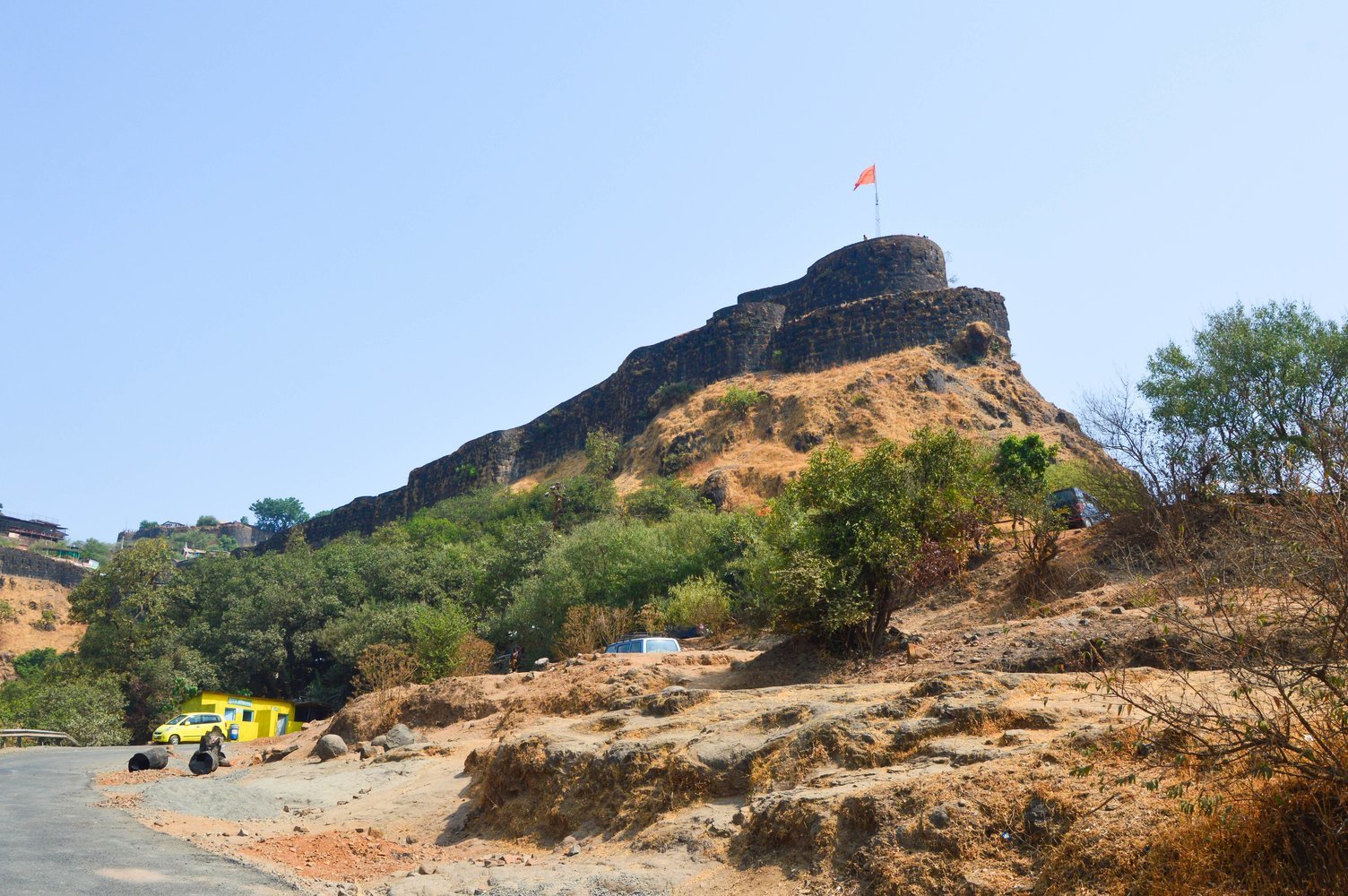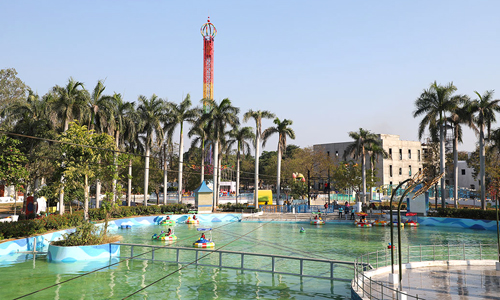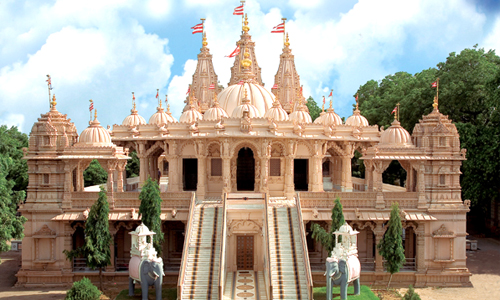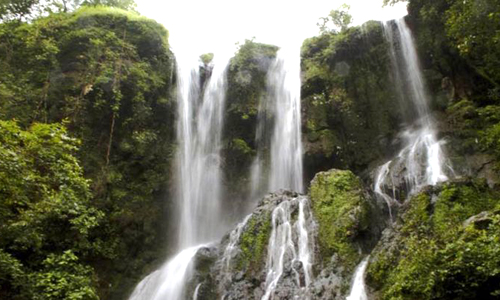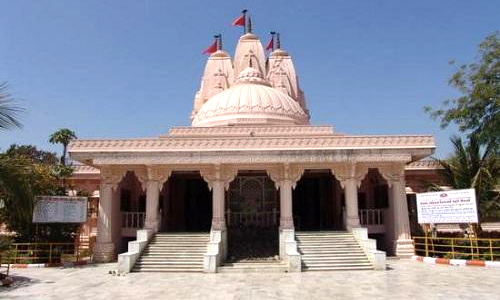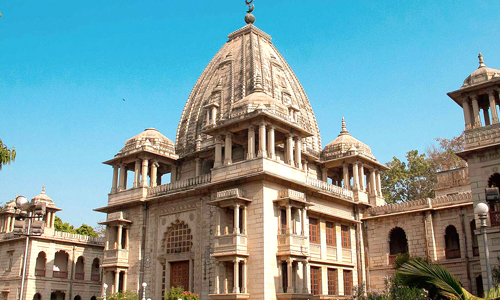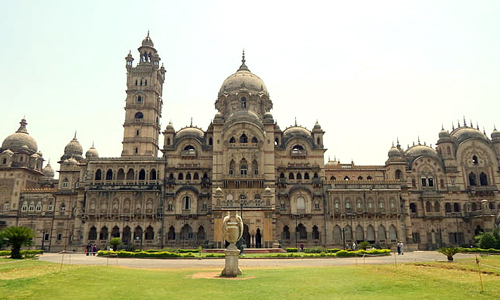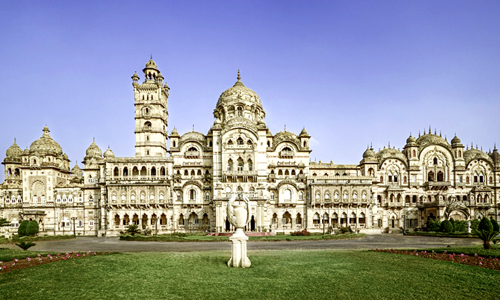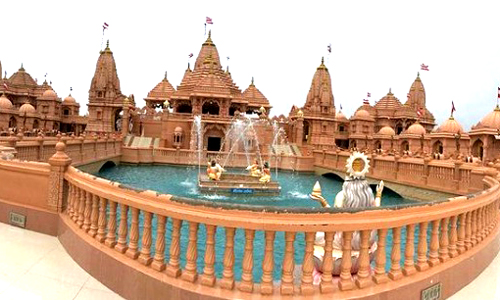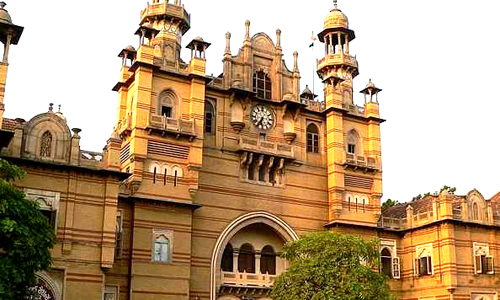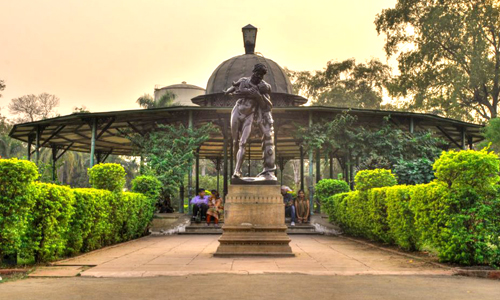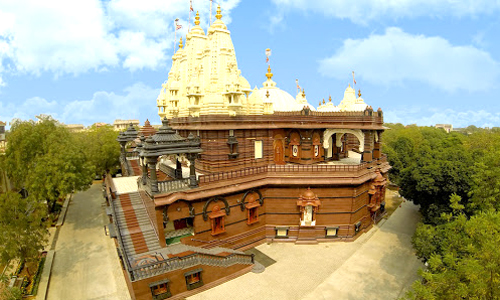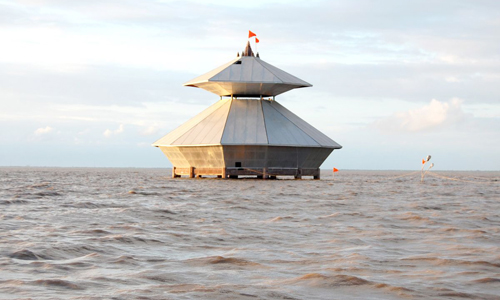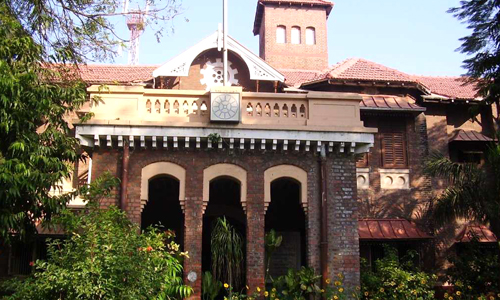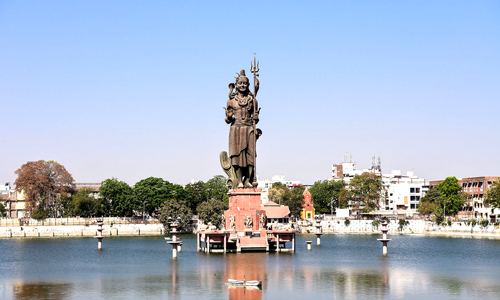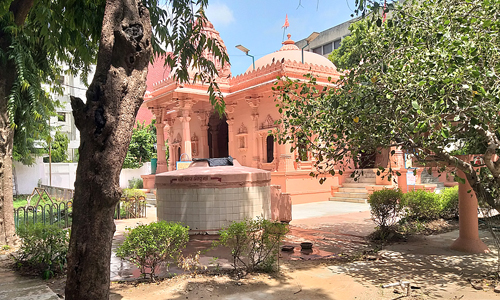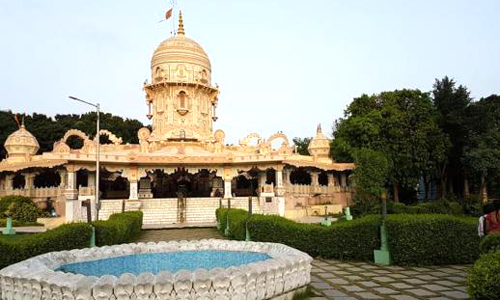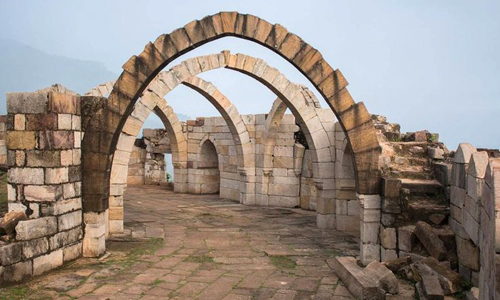The EME Temple is also known as the Dakshinamurthy Temple. It is popular for having a large statue of Lord Shiva, as well as a small Lord Ganesha (specially brought in from Mahabalipuram). A silver arch with the sacred phrase "Om Namah Shivaya" etched on it is also there. A must-explore Temple among the places to visit in Vadodara.
Archaeologists generally agree that this Temple is unusual in terms of design, concept, and geodesic design, covered with war fragments and aluminium sheets. The Temple's distinguishing feature is how it promotes secularism by combining holy symbols from many religions into its design.
The Kalash on top represents Hinduism. The Dome represents Islam. The Tower is a symbol of Christianity. The golden structure atop the Tower symbolises Buddhism. The Entrance represents Jainism. An attraction standing out in the Vadodara tour package.
Architecture of the Temple
The EME Temple, built in traditional geodesic style, is a superb example of the values that serve as the cornerstone of the Indian Army. Carvings of holy symbols from numerous religions adorn the structure's exterior. Each substructure of the design represents a distinct faith.
• The 'Kalash' atop the Dome represents Hinduism.
• The Dome is in mosque design, representing Islam.
• The Tower represents Christianity.
• The golden hat at the top of the building represents Buddhism.
• The main temple gateway is roped in the Jain style.
What is the full form of EME Temple?
The EME Temple in Vadodara is an aluminium-clad dwelling constructed at the crossroads of ancient and modern. It is named for the individuals who built the Temple. It is a symbol of secular practice in the Indian Army.
What is the history of the EME Temple?
The Electronics & Mechanical Engineers (EME) School of the Indian Army erected the EME Temple in 1966. It is under the maintenance and administration of the Army in Vadodara, Gujarat state, Western India. The Temple is a famous tourist attraction and the only one of its sort in the world.
Who was the architect of the Temple?
It was created in 1966 by the Indian Army's Electrical and Mechanical Engineering (EME) division. Brig A.F. Eugene, the EME School's then-Christian commandant, conceived, drew, and built the Temple.


